
Expert dental tips, news, and smile advice

Expert dental tips, news, and smile advice

It started, as these things often do, with excitement, laughter, and a bit of glitter.
Little Emma had chosen to be a sparkly vampire—because, as she explained to her mom, “vampires have the best teeth.” Her mother, Michelle, laughed at the irony as they joined the neighborhood trick-or-treat along Dallas Acworth Highway. The streets were dotted with carved pumpkins and flickering porch lights. Kids darted from house to house, capes flying, parents juggling coffee cups and candy buckets.
That night, Emma’s smile was wide and fearless. Her candy bag overflowed—chocolates, caramels, gummies, the occasional taffy that stuck to its wrapper like glue. Michelle didn’t think twice. It was Halloween, after all—a once-a-year tradition she remembered fondly from her own childhood.
But two days later, the sweetness began to fade. Emma winced mid-bite into her sandwich. “Mom,” she mumbled, “my tooth feels sharp.” She pressed a tiny hand to her cheek. Michelle’s heart sank.
Halloween candy isn’t evil—it’s just sneaky.
Sticky caramels and gummy treats can cling to teeth like sugar glue, especially in the deep grooves of molars where even the best brushing can’t always reach. Sour candies, while fun for kids to dare each other with, are double trouble: the acid weakens enamel before sugar feeds the bacteria waiting to take advantage. Even lollipops—the innocent kind kids roll between their teeth—keep sugar bathing enamel for far too long.
According to Dr. Tyler Driggers of CrossRoads Pediatric Dentistry in Dallas, GA, “It’s not just about how much sugar kids eat; it’s about how often they eat it. Every time sugar touches the teeth, acid attacks the enamel for about 20 minutes. If kids snack all day on candy, their teeth never get a break.”
The result? Even children with good hygiene habits can end up with early cavities or enamel sensitivity by Thanksgiving.

When Michelle called the office, she wasn’t panicked—just unsure. Was it worth seeing a dentist for a little “ouch”? Would she sound overprotective?
The receptionist at CrossRoads reassured her that it was a common post-Halloween call. “You’re not overreacting,” she said warmly. “Kids’ teeth are smaller, and candy can easily hide where you can’t see it. Let’s take a quick look.”
At the appointment, Dr. Driggers discovered a tiny piece of caramel wedged between Emma’s back tooth and gumline. It hadn’t caused a cavity yet—but it was close. A gentle cleaning, some fluoride treatment, and a quick refresher on brushing technique later, Emma was back to smiling her sparkly vampire grin.
But the real transformation happened in Michelle’s understanding. “I realized it’s not about banning candy,” she later said. “It’s about knowing how to let her enjoy it safely.”
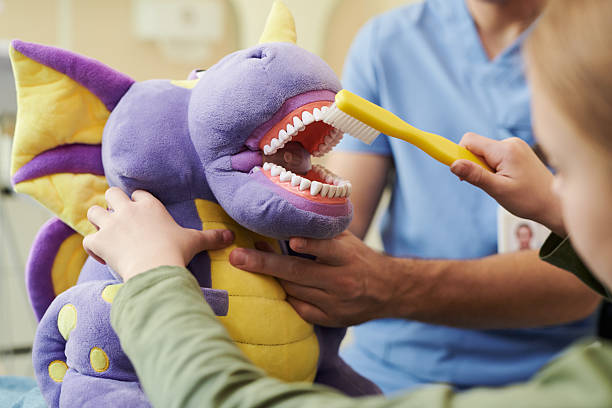
As Emma’s visit wrapped up, the hygienist gave her a small mirror and said, “You have superhero teeth now—strong enough to fight sugar bugs.” Emma giggled. And just like that, brushing turned into a game.
Dr. Driggers explained to Michelle that forming good habits early can prevent lifelong dental anxiety. “When we make dental visits fun and educational, kids don’t see them as punishment,” he said. “They see them as self-care.”
At home, Michelle began using a few of the office’s simple tips—little changes that made a big difference.
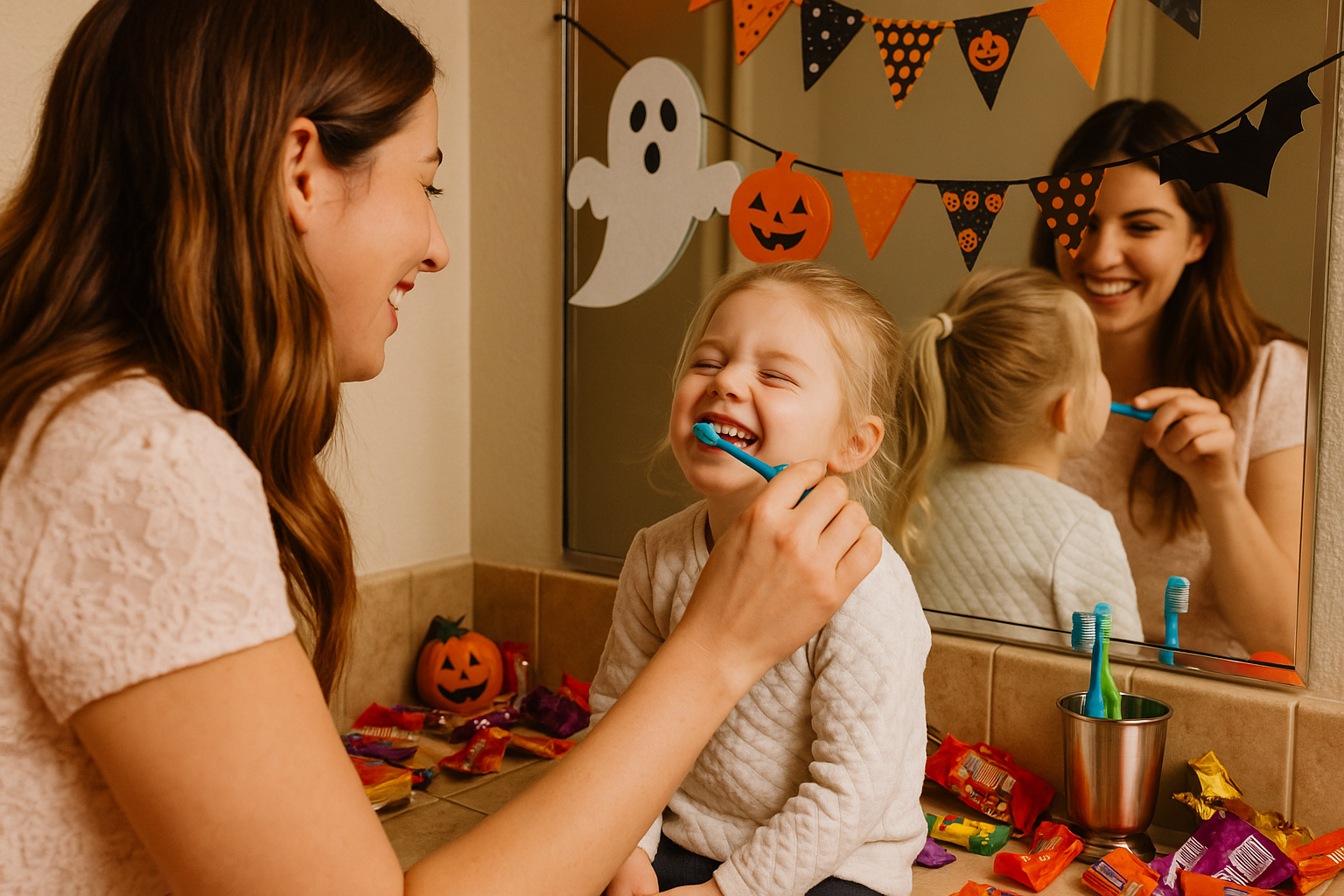
1. Candy time, not candy all the time.
Pick one designated treat time—preferably after dinner when saliva flow is strongest. This limits acid attacks and helps teeth recover between sweets.
2. Water is the unsung hero.
After candy, encourage a big drink of water or even a quick rinse. Water washes away sugar residue and helps neutralize acid.
3. Crunchy snacks for cleanup.
Apples, carrots, and cheese can act like natural scrubbers. After sticky candy, offer these as “teeth snacks” to balance things out.
4. Bedtime brushing is non-negotiable.
The real cavity culprit is sugar left overnight. Make brushing before bed a team effort—kids love when parents join in.
5. A fall checkup seals the deal.
Booking a post-Halloween visit gives your dentist a chance to check for hidden damage, apply sealants, or refresh fluoride protection.
If your child’s smile has survived a candy-heavy Halloween, give it a quick professional check-up to keep it strong through the holidays. Book an appointment today!
Discover the best solution for your smile at Fortson Dentistry. Schedule your appointment now and let our expert team guide you to a confident, healthy smile.

One of the biggest hurdles parents face isn’t sugar—it’s guilt. Many feel embarrassed if their child has a cavity, assuming they’ve failed at home care. But Dr. Driggers emphasizes that cavities are not a moral failure—they’re a science problem.
“We never lecture,” he says. “We guide. Every family has different routines and challenges, and our job is to help them find what works, not to make them feel bad.”
Michelle echoed that sentiment. “They treated us like partners,” she said. “Instead of judgment, we got education. And that made all the difference.”
That shift—from fear to empowerment—is what pediatric dentistry is truly about.
Here’s a surprising fact: every piece of candy starts a 20-minute acid attack on tooth enamel. If your child eats three candies an hour, that’s nearly an hour of constant acid exposure.
And saliva, which normally protects teeth, can only do so much. Like a sponge, it needs time to “reset.” That’s why timing treats together (instead of nibbling all day) is so powerful—it gives saliva a fighting chance.
For children with braces or dental appliances, the risk is even higher. Sticky candies can pull wires loose or hide under brackets where brushing can’t reach. In those cases, Dr. Driggers recommends skipping gummy or chewy treats entirely.
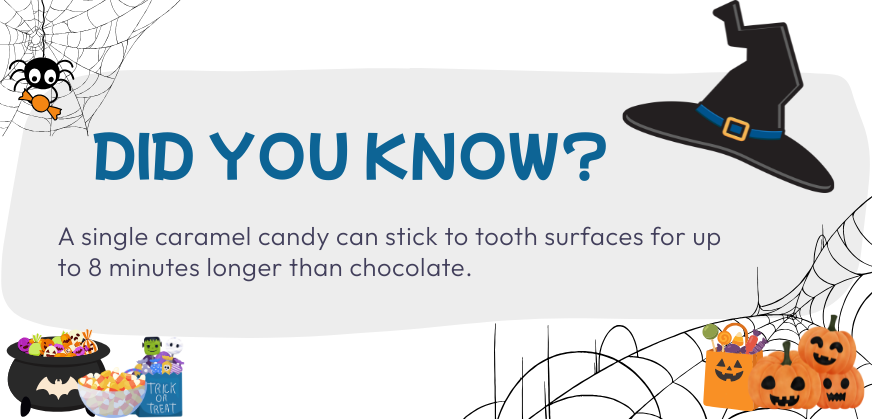
By Thanksgiving, Emma’s “vampire teeth” had transformed into something even more powerful—a source of pride. She brushed twice daily without prompting and reminded her mom to schedule their next cleaning.
That small moment—seeing her daughter take ownership of her health—was worth every early morning brushing session. Michelle realized dental care wasn’t just about avoiding cavities. It was about giving her child confidence in her body, independence in her habits, and a smile that reflected both.
When we talk about protecting smiles, we’re not just talking about enamel. We’re talking about identity—how children see themselves when they look in the mirror.
Halloween can serve as a springboard for long-term oral health lessons. Parents can use candy season as a hands-on way to teach kids about cause and effect:
Dr. Driggers often compares it to superhero stories: “Every time we brush, we give our enamel new armor.” It’s an image that sticks—especially for young patients learning to take responsibility for their health.
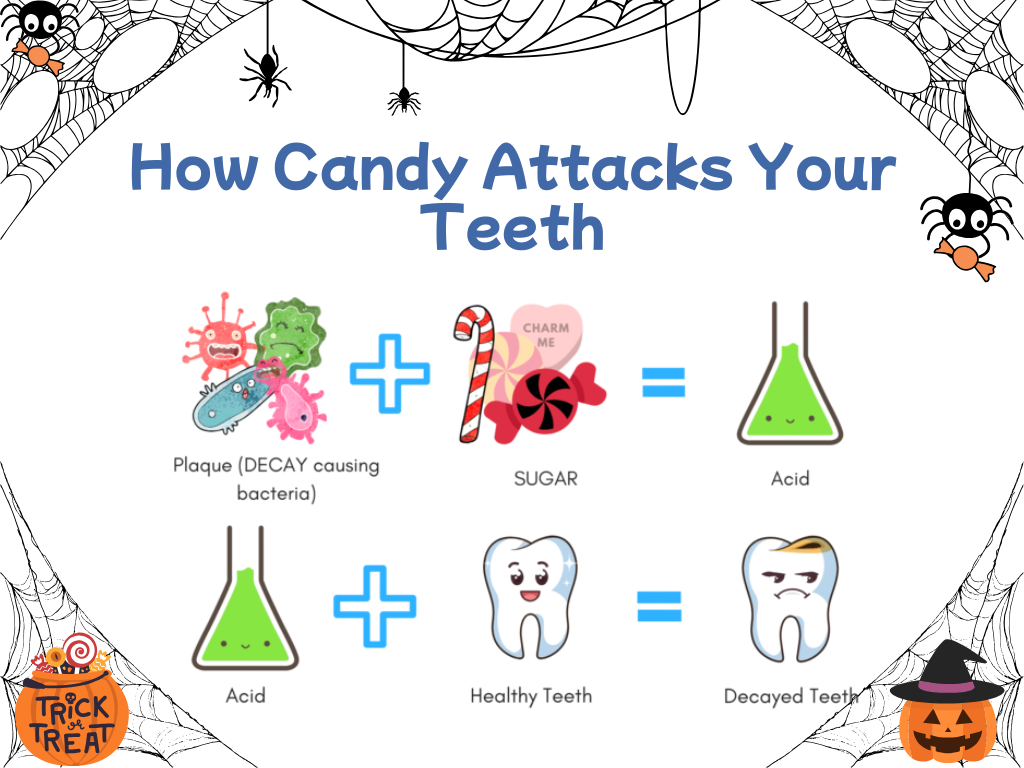
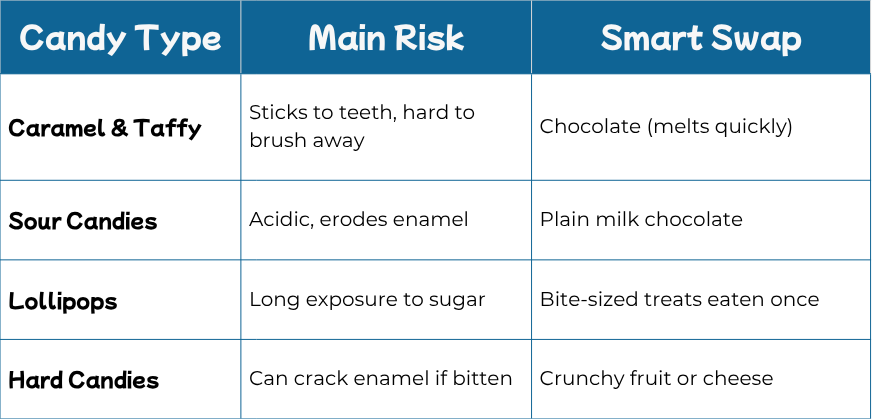
When Halloween ends, the real opportunity begins.
Teaching kids that candy isn’t forbidden—it’s just managed—sets them up for a lifetime of mindful choices. Emma didn’t stop loving sweets; she just learned how to enjoy them wisely.
And Michelle? She still smiles every time she sees her daughter brushing her “vampire teeth.” Because she knows that somewhere between the candy wrappers and the toothbrush, Emma learned something lasting: self-care can be sweet, too.
1. Should I let my child keep their Halloween candy?
Yes—but manage portions. Choose one treat time daily instead of grazing all day. Store candy out of sight and make it a shared family treat moment.
2. Are some candies safer for teeth?
Absolutely. Chocolate is the least sticky and easiest to rinse away. Avoid caramels, taffy, and sour candies that cling or erode enamel.
3. My child’s tooth hurts after candy—what should I do?
Call your pediatric dentist. At our Dallas practice, we often find minor irritation or early enamel wear that can be easily treated if caught early.
4. How soon after Halloween should we schedule a cleaning?
Ideally within 2–4 weeks. It gives your dentist a chance to check for any candy-related wear and apply preventive treatments before the holidays.
5. Does fluoride really help?
Yes. Fluoride rebuilds softened enamel and helps reverse early-stage decay. Professional fluoride treatments are especially helpful after a sugar-heavy season.
6. How do I make brushing more fun for kids?
Turn it into a game—music timers, sticker charts, or letting kids “teach” parents how to brush make it feel like play, not a chore.